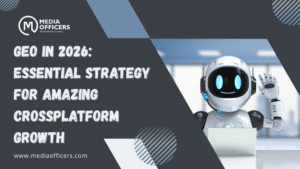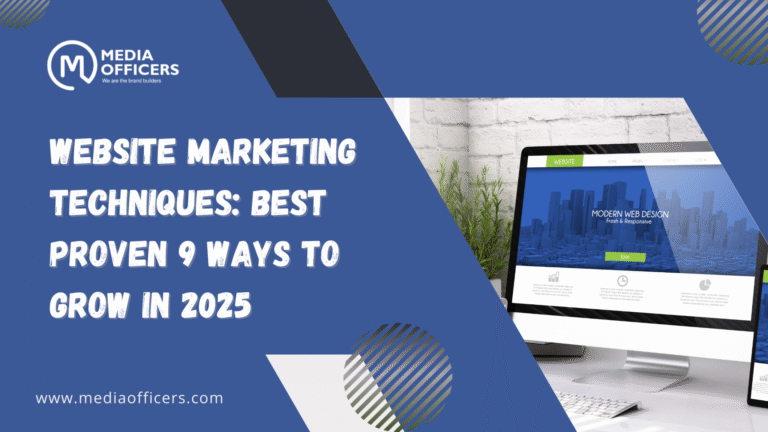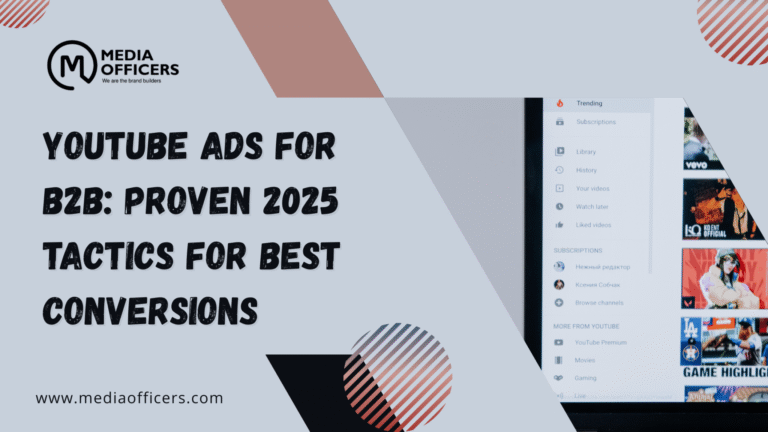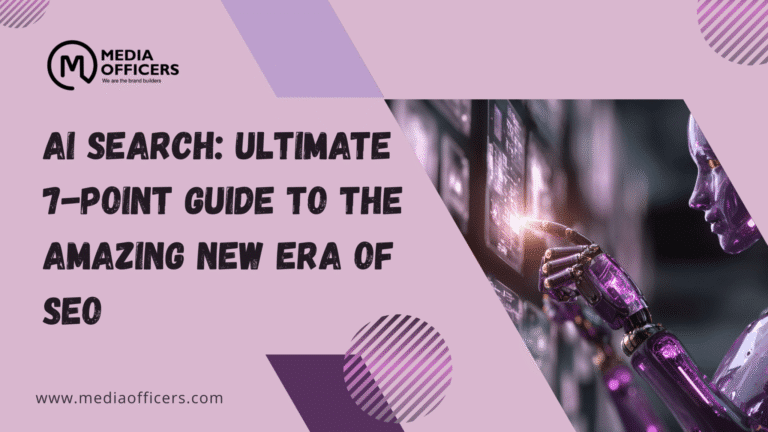GEO is the new lens for search strategy in 2026, reframing how we plan, create, and measure impact across channels. GEO stands for Generative Engine Optimization, and it shifts our focus from chasing keywords to understanding where people search and how they interact with content. This mindset changes how we allocate budgets, build teams, and design experiences that feel helpful at the moment of need.
In this guide, you’ll learn how to plan financially and strategically for GEO in 2026, what it means for your team and your data, and how to meet your audience where they actually search. The core idea is simple: search today is a journey through multiple touchpoints, not a single destination. GEO asks you to map the journey, understand the moments that matter, and show up with content that resonates across every channel your audience uses.
What GEO Means in 2026
GEO reframes search as a multi-platform, human-centered experience. Google remains a giant, but users now bounce across ChatGPT, TikTok, review sites, Reddit, and more as they discover and decide. In practice, this means we plan for discovery in places people trust and frequent, not just the highest ranked page. For brands, GEO is a call to build credibility through consistent signals across formats and devices, so that the first touchpoint feels as trustworthy as the last touchpoint before purchase.
To succeed with GEO in 2026, you must treat search as an ecosystem. This requires a blend of audience insight, transparent brand storytelling, and a portfolio of content designed for different mindsets and moments. It’s not about chasing a single ranking. It’s about occupying the spaces where your audience looks for reassurance, answers, or inspiration, across the journeys they take every day.
Analyze Search Intent & Keywords (A GEO-Driven Foundation)
The first step in any GEO plan is to understand intent and align it with a durable set of keywords. Start by identifying a primary target keyword that captures the core idea of your GEO strategy. For example, if your business helps teams plan for multi-platform discovery, the core keyword could be GEO or GEO strategy in 2026. Then identify 3–4 secondary keywords that support variations and related topics.
But the analysis goes beyond traditional keyword research. In a GEO world, you map intent to four core human drivers: fact-finding, crowd-sourcing, taste-tuning, and habit-driven actions. Use surveys, social listening, focus groups, and analytics to understand where your audience searches, what they’re trying to accomplish in that moment, and what motivates them to act. This behavior-led approach ensures your GEO content aligns with real user needs and sets a strong foundation for multi-platform visibility.
Rethink Ranking: Occupying the Right Search Real Estate
The era of a single ranking position is over. Search real estate now includes images, sitelinks, video carousels, reviews, forum answers, shopping links, and AI-powered responses. The opportunity is to think beyond traditional SERP positions and to occupy the spaces where people already search for reassurance, guidance, or inspiration.
To cover the full spectrum of intent, use a simple content framework that maps to four core formats and mindsets:
- Shape perspectives: Opinion-led, expert content. Mindset: curious, reflective, and idea-driven. Brand opportunity: build thought leadership and spark category conversations. Formats: opinion pieces, newsletters, blogs on platforms like X, Medium, and Threads.
- Inspire and engage: Short-form and visual storytelling. Mindset: identity, emotion, connection. Brand opportunity: authentic storytelling that builds affinity. Formats: short-form video, UGC, reels on TikTok, Instagram, YouTube Shorts.
- Inform and reassure: Long-form, detail-rich content. Mindset: facts, clarity, confidence. Brand opportunity: expertise and transparency. Formats: guides, FAQs, whitepapers on Google, Bing, or specialist AI tools.
- Simplify and empower: Explainer and how-to. Mindset: practical steps and easy action. Brand opportunity: reduce friction with visual learning and demonstrations. Formats: how-tos, demos, webinars on YouTube and LinkedIn Live.
Your GEO budget should be allocated across these formats, not just to rank but to show up where your audience looks for reassurance, answers, or inspiration in the format that fits their moment. This multi-format mix helps you own discovery across search, social, and AI-powered touchpoints.
Build Entity Authority: Make Your Brand Understandable to Humans and Machines
In a GEO-led world, your brand needs to be understood, not just crawled or linked to. Large language models do not see your brand the same way search engines do. They need structured clarity about who you are, what you do, and why you’re credible. Treat your business as an entity with clear components: Brand, People, Products, Expertise, and Processes. These assets exist in many forms already author bios, about pages, product descriptions, awards but they’re often scattered or buried.
Make your decision-making visible. Use how-we-choose content, add explainer videos, and surface related resources in a way that mirrors how your team thinks. This transparency helps both humans and machines understand your brand’s logic and journey, building trust across every stage of the funnel.
Invest in Trust and Credibility: The E-E-A-T Foundation for GEO
With GEO, trust is not a supplement to SEO it is the core. E-E-A-T remains a strategic cornerstone in 2026. Your budget should include always-on digital PR, data storytelling, and proactive reputation management to establish authority and credibility. A practical distribution plan might be:
- 45% always-on commentary and seasonal hooks
- 30% evergreen assets that compound over time
- 20% integration with on-site content and schema
- 5% experimentation with new multimedia formats and AI-native content
Every GEO campaign should answer a simple question: would your audience type the answer into Google or ask an assistant, and would they trust the result? If yes, you are building GEO-ready content that earns credibility at the source.
How Multimodal Discovery Redefines SEO in the AI Era
Think about the messenger. The messenger effect suggests people judge information based on who is speaking. In GEO, you should plan for four voices to carry your messages: Brand voice, User Generated Content voice, Influencer voice, and Media voice. Placing the right voice at the right moment amplifies trust and improves perceived credibility before a user even lands on your site.
Starting early with voice planning ensures you have the budget to secure the right creators, partnerships, and amplifications as your GEO program evolves. This approach helps you navigate the expanding landscape of discovery signals, from chat assistants to social platforms to traditional media features.
Rethink Your Reporting Strategy: Measure What Matters in GEO
GEO visibility can’t be fully captured with traditional SEO tools alone. Your reporting should track how you appear in AI overviews and assistant responses, monitor brand mentions and citations, and measure entity performance through structured data. Build internal systems for first party behavioral data and sentiment tracking so you can tie what people say about you to actual on-site actions. For example, server log analysis can reveal how often audiences engage with your brand on messaging apps, or how often group chats influence discovery and demand. This richer visibility enables personalized experiences and smarter messaging decisions.
Budgeting for GEO: People, Process, and Cross-Functional Teams
GEO success relies on cross-functional teams that blend SEO, PR, content, data, and behavioral insight. You’ll likely need to increase budgets for talent, training, and culture to break down silos and empower collaboration. The goal is to build capability across the organization so teams understand how humans search and how machines learn. A robust GEO budget recognizes that visibility now happens across many channels and requires flexible, integrated skills.
Design for Discovery: Plan for Everywhere Your Audience Searches
As search becomes more distributed, your content needs to be ready to answer in multiple contexts. The question you should answer as you plan for 2026 is simple: are we showing up everywhere our audience searches, with content that meets their needs at each moment? If you can answer yes, you’re advancing toward a GEO-ready ecosystem where discovery is curated, not forced.
STEP-BY-STEP SEO Strategy to Execute
Here is a practical blueprint you can apply now to align with GEO in 2026. Each step builds on the previous to create a cohesive, multi-platform strategy.
- Analyze Search Intent & Keywords: identify a primary focus keyword and three to four supporting terms. Map these to the four human search drivers to ensure your content addresses real user needs.
- Craft Core SEO Elements: write an SEO title that places the focus keyword first, includes a power word, a positive sentiment word, and a numeric cue, all under 65 characters. Create a meta description with a strong CTA and your primary keyword.
- Structure the Article for GEO: compose the content with clear H2 and H3 headings, short paragraphs, and bulleted lists. Weave primary and secondary keywords naturally into headings and body text.
- Invest in Entity Authority: surface decision-making logic, use structured data, and publish explainer content that clarifies how you operate and why it matters. Prioritize transparency and trust signals across channels.
- Allocate a Cross-Platform Budget: divide resources across core SEO, digital PR, data/analytics, training, and innovation. The emphasis should be on building discovery across formats and platforms.
Remember, GEO is not about chasing algorithms. It is about earning trust by showing up where your audience already looks, with content that genuinely helps them in the moment of need. The future of search is to design for discovery everywhere, and to measure impact across the entire journey, not just at the top of the funnel.
Design for Discovery Everywhere
As users search across a growing ecosystem of touchpoints, your content must be ready to deliver value in any context. The best GEO programs test continuously, learn from results, and adapt quickly. Think in terms of journeys, not pages. Create a library of content variations that address the same topic from different perspectives, ensuring your brand remains helpful across channels, devices, and moments of need.
Frequently Asked Questions
What is GEO and how is it different from traditional SEO?
GEO stands for Generative Engine Optimization and focuses on where and how people search across multiple platforms, not just on one SERP. It emphasizes multi-platform discovery, entity authority, and trust signals, integrating AI-native formats and cross-channel signals into a cohesive strategy.
How do I start a GEO strategy in 2026?
Begin with deep audience research to identify where your users search and what drives their behavior. Map intent to four driver categories, develop a cross-platform content mix, and invest in cross-functional teams. Build an entity-first architecture and a data-driven reporting system that captures first-party behavior and sentiment.
How should I allocate my GEO budget?
Use a cross-functional framework: 40% core SEO for foundations, 25% digital PR and E-E-A-T, 20% data and reporting, 10% training, and 5% innovation. This ensures you maintain foundations while growing authority and discovery across platforms.
How do I measure GEO success?
Measure a combination of on-site outcomes (engagement, conversion, and retention) and off-site signals (brand mentions, citations, and sentiment). Track entity performance with structured data and monitor how often audiences seek your brand via messaging apps and communities to gauge real-world discovery.
Conclusion
The future of search is not about gaming rankings but about understanding the human behind the query and showing up with something truly helpful. GEO in 2026 invites you to expand your view beyond a single SERP, invest in credibility across formats, and design for discovery everywhere. If you embrace the multi-platform mindset, build transparent brand logic, and empower cross-functional teams, you’ll lead the way in a rapidly evolving search landscape. The era of GEO is here, and the opportunity to shape it is yours to seize.





